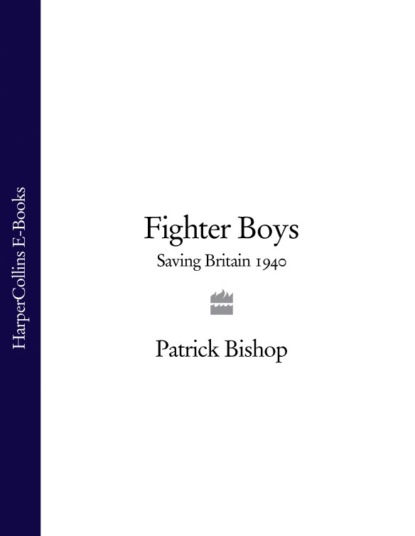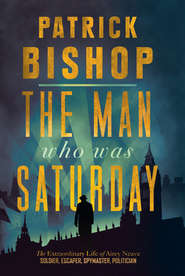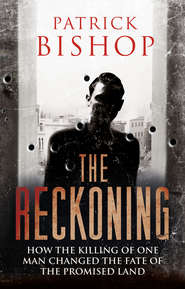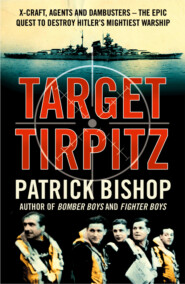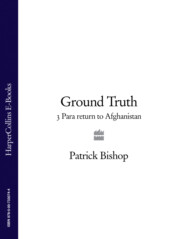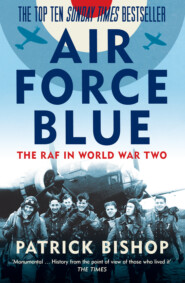По всем вопросам обращайтесь на: info@litportal.ru
(©) 2003-2024.
✖
Fighter Boys: Saving Britain 1940
Настройки чтения
Размер шрифта
Высота строк
Поля
The pilots fighting the battles lived among those they were defending. At 6.40 p.m. that Thursday, just outside Sevenoaks, Michael Crossley caught up with one of the Me 110s that had raided Croydon and set it on fire, sending it crashing down near the pleasant village of Ightham. Two hours later he was accepting drinks from locals in the pub, a few miles from where workers were clearing the wreckage and retrieving the corpses of the dead.
The Battle of Britain had many of the characteristics of a siege. Everyone inside the enclave, active or passive, soldier or civilian, was a defender. The closeness this engendered could sometimes be almost unbearable. The girlfriend of Flying Officer Douglas Grice, the ‘Grubby’ of Crossley’s report, was a Waaf at Biggin Hill. The buzz that her man had ‘gone in’ reached her in a break between driving pilots out to their aircraft. Grice was badly burned but recovered. There were much worse stories. On a later occasion another Waaf, Edith Heap, who worked in the Debden control room, froze as a voice over the Tannoy reported ‘Blue Four’ was falling into the sea in flames. She knew, without waiting for confirmation, that the man she loved and was about to marry was dead.
Looking up at the wheeling Spitfires and Hurricanes, ordinary people imagined their own sons or brothers at the controls. Sometimes it was true. The mother of Tim Elkington, a young pilot with 1 Squadron, watched from the balcony of her flat on Hayling Island as he was shot down, baled out and drifted perilously over the sea before finally landing safely.
But you did not need ties of blood or romance to feel a particular bond with the Fighter Boys. The backgrounds of the few thousand pilots flying Hurricanes and Spitfires in the summer of 1940 reflected the social composition of the nation, a point that was emphasized by official and unofficial propagandists. ‘The most striking thing about the fighter pilots is their ordinariness,’ wrote a war artist who spent months among them. ‘Just you, I, us and co.; ordinary sons of ordinary parents from ordinary homes.’
(#litres_trial_promo) Fighter Command was perhaps the most motley elite ever to exist in the British military. In 32 Squadron, Crossley had been at Eton. John Proctor had left school at fourteen to become an RAF apprentice. Many of those standing in the pub had been in the RAF reserve before the war, training in their spare time from their often mundane jobs. Oliver Houghton had been a fitter in a Coventry factory. William Higgins was a teacher in a Derbyshire village school.
Their interests and attitudes were as broad as their backgrounds. Fighter pilots might be philistines or intellectuals, bon vivants or ascetics, pious or godless, cynical or trusting. There were some whose dominant trait of recklessness or aggression or amiability made them stand out, but most were too ordinarily complex to be pigeonholed. Fighter squadrons were collections of individuals. The nature of the fighting made it so. Once combat began, a pilot was usually on his own, beyond the control of his commander and making fateful decisions alone.
There were, though, strong affinities and common characteristics that bound the bunch together. The most potent was a love of flying. Speaking about flying, and when occasionally they wrote about it, the pilots dropped their usual clipped understatement for the language of passion. It was an obsession and an addiction and aeroplanes were far more than simply machines. They had quasi-human qualities. They could be brutish and heavy or beautiful, fragile and sensitive. If it was love, it was nearly always love at first sight. The pilots’ reminiscences are full of lyrical memories of the first encounter, when the flying circus arrived in town or a mysterious figure floated out of the sky to land in the field next door.
Charles Fenwick was a little boy in the Kentish village of Harbledown when Sir Alan Cobham’s troupe of itinerant flyers passed through. His aunt took him to see them.
‘Would you like to go for a flip?’
What a stupendous question! I was on my way to the plane as fast as I could go. I was small for my age and flopped into the rear cockpit. The plane was an early Avro, an aerial marvel quite beautiful to behold. Well, my idea of beauty, all struts and wires and canvas with that intoxicating smell compounded from dope and fuel and hot oil. But to beat it all she was alive. She was roaring like a lion and rattling. I was heading for heaven.
(#litres_trial_promo)
Flying requires courage. Going solo in any aeroplane is alarming. Most aviators never lose a faint feeling of insecurity, no matter how great their experience. Flying with an instructor for the first time in a light aircraft, trainees noted queasily how thin the fuselage seemed, how flimsy the wings, how easy it might be to tip out in a turn. The sensations got more alarming as they progressed to more powerful machines. The Harvard trainer, whose 600-horsepower engine provides only half the thrust of the Merlins of the Hurricanes and Spitfires, is disconcerting enough. Clamping into a tight turn, the most basic manoeuvre of dog-fighting, G forces drag your guts to the sump of your stomach and press your head down on your chest as if you are being crushed by a giant hand. A simple half-roll sends the world spinning incomprehensibly, earth and sky alternating in a blur.
When I experienced this as a passenger, fear never felt far away. It is hard to imagine how pilots were able to fling their aeroplanes around in this way without succumbing to disorientation or panic. It is harder still to understand how they could shoot at, and hit, other aeroplanes while they were doing so. To have the reflexes and eyesight needed to do these things you had to be young. Most pilots were aged between nineteen and twenty-six. They tended to be young in their outlook as well. They liked the latest music, films and fashions and spiced their talk with Americanisms, creating a Hollywood-meets-public-school slang.
The Fighter Boys belonged firmly to contemporary Britain, ideal warriors in what was being shaped as a people’s war. To the public it seemed that their technological skill was, comfortingly, fused to old values and traditions. The pilots’ fathers had fought and died in a war that had traumatized Europe and stimulated a wave of pacifist, and then defeatist, feeling. Yet the sons were accepting their duty willingly, almost cheerfully, and confronting the horror again.
On that August night, as the blackout shutters were fitted into the leaded windows of the White Hart, as last orders were called and the banter and laughter subsided, unwelcome thoughts of tomorrow edged in. The fighting of the day had brought only an interim victory, one that would have to be won over and over again. No one present, airman or civilian, was now in any doubt that they were in the middle of a struggle which would determine whether or not Britain would survive as a free country. Winston Churchill had set the stakes even higher. The battle, he said, would decide the fate of the civilized world. Many elements were involved in determining the outcome. Chief among them was the skill, morale and courage of the Fighter Boys. It was an extraordinary responsibility. Not since classical times had such a tiny band of warriors been asked to bear such a heavy burden. It was the pilots, though, who seemed the least concerned as they finished the dregs from their pewter mugs and stepped out into the cool, hop-scented Kent night.
1 Sportsmen and Butchers (#ulink_8c63e0f9-d822-516c-9fe7-c264d51c8d3c)
In the summer of 1940 the art of air fighting was only twenty-six years old. In that time, aeroplanes had moved from the extreme periphery to the centre of modern warfare. The invention of aircraft made air wars inevitable. Innovators moved with depressing speed to fit guns to flying machines. The air shows at Hendon, Brooklands and Rheims held before the First World War emphasized the potential destructive power of the thing they were celebrating, with aviators dropping flour bombs on the outlines of warships traced in chalk on the ground. Writers frightened readers with stories of airships bombarding cities, a prophecy whose accuracy was soon to be confirmed.
For the military, though, it was the information-gathering potential of aeroplanes that first attracted interest. The first aircraft were used as observation platforms. In the war game played in September 1912 at the annual British army manoeuvres, Red Force and Blue Force were each equipped with a supporting air component. Early on, two airborne officers from Blue Force spotted a concentration of opposition troops and correctly guessed their direction. The information helped their side to win.
The victorious commander, Lieutenant-General Sir James Grierson, drew an important conclusion from the exercise. ‘So long as hostile aircraft are hovering over one’s troops,’ he wrote, ‘all movements are likely to be seen and reported. Therefore the first step in war will be to get rid of hostile aircraft.’
(#litres_trial_promo)
This was how combat in the air was to develop in the four years of the Great War. The essential role of aeroplanes was to lift the roof off the battlefield, allowing commanders to peer into the enemy’s territory, detecting his movements and trying to divine his intentions. At the same time, spotters hovering perilously over the front lines helped to direct the artillery barrages that occupied much of the effort of both sides.
The rival pilots, from the outset, tried to kill each other. One of the first recorded encounters took place on 25 August 1914. Lieutenant C. E. C. Rabagliati of the Royal Flying Corps was cruising with an observer on a reconnaissance mission over northern France when they came across a lone German aeroplane. Rabagliati’s aircraft was unarmed, but he had with him a .303 service rifle. The German carried a Mauser pistol, fitted with a wooden shoulder stock. The two machines approached each other and circled, coming within feet of colliding. Rabagliati fired a hundred rounds without success. Then, he reported afterwards, ‘to my intense joy, I saw the German pilot fall forward on his joystick and the machine tipped up and went down’.
(#litres_trial_promo)
Such encounters were to be repeated thousands of times in the following years. Technological advances, accelerated by the demands of warfare, meant that the aircraft became faster, more nimble and more sturdy, and the weapons they carried more deadly. But the purpose of aerial fighting remained the same. No bomber heavy enough to make a significant difference on the battlefield or in the rear had emerged by the end of the war. The main function of military flying remained observing the enemy, and trying to prevent the enemy from observing you.
These activities grew to be increasingly important as the war progressed. The RFC went to France with sixty-two aircraft. In April 1918 it became, together with the Navy’s air arm, a service in its own right, the Royal Air Force. It finished the war with 1,799 aeroplanes. This transformation was presided over by a particularly forceful and energetic commander, Hugh Trenchard. There were others who played a crucial part in the creation of a separate air force, but Trenchard’s passion made him stand out. He became known as ‘The Father of the RAF’, a label he claimed to detest. The designation had some truth in it, though. He loved the air force with the fierce love of a father; a Victorian father who would not flinch from sending his boy to his death if duty demanded it.
Trenchard combined nineteenth-century mores with a twentieth-century appreciation of the new. He was born on 3 February 1873 in the West Country, and had a difficult childhood. His sister died of diphtheria, his solicitor father was bankrupted and he failed several attempts to enter military schools before scraping a commission as a second-lieutenant in the Royal Scots Fusiliers and being posted to India. He spent the first decade of the new century in southern and western Africa. In October 1900 he was shot in the chest while trying to capture Boers and was expected to die. Trenchard, who ‘hated sick people’, pulled through, recovering in characteristic fashion by hurtling down the Cresta run at St Moritz.
He was tall, bony, with mournful eyes that seemed to search for faults and slights. His personality was similarly angular: quarrelsome, morose and dissatisfied, ill at ease in the genial atmosphere of mess and gymkhana club. By 1912 it was clear that his career was going nowhere. He was approaching forty, unmarried and not much loved. His salvation came in a letter from one of his few friends, Captain Eustace Loraine, who was learning to fly at the RFC aviation school on Salisbury Plain. ‘You’ve no idea what you’re missing,’ Loraine wrote excitedly. ‘Come and see men crawling like ants.’
(#litres_trial_promo)
Trenchard was not a natural pilot. His tall, long-legged frame looked ridiculous crammed into the narrow seats of the primitive Blériots and Farmans that were used to give instruction to trainees. What fascinated him was not flying itself, but its potential. He sensed he had finally made his rendezvous with destiny and joined the RFC. Three years later, in August 1915, he became its commander.
Trenchard tried to make the RFC indispensable, straining to satisfy every demand made on it by the army no matter how unreasonable, or how limited his resources. The aim was to obtain and maintain control of the air over the trenches. The balance of power shifted constantly as the technological and tactical advantage swung back and forth between the sides. The level of fighting was kept high. The RFC’s main business was reconnaissance. Trenchard decided early on that the best way of defending the spotter aircraft and ensuring a steady flow of intelligence to the army was to go on the offensive, reaching over the lines into enemy air space. This was, at best, a logical response to the three-dimensional nature of aerial warfare in which there were no fixed lines to defend and to wait for the enemy to attack was to cede a moral advantage. At times, though, it could seem like an echo of the numb thinking of the terrestrial generals, who, literally stuck in the mud, threw more and more troops into futile attacks because they could think of nothing better to do.
Trenchard did not hesitate to sacrifice men to fulfil the RFC’s obligations to the army and maintain the momentum of aggression. The losses among pilots during the great offensives of 1916 and 1917 came close, in proportionate terms, to matching those on the ground. During the Battle of the Somme pilots were in the air for five or six hours a day. The gaps were often filled by novices coming straight from flying school. Cecil Lewis, eighteen years old, was asked by a senior officer when he arrived at No. 1 Aircraft Depot at St Omer how many hours’ flying experience he had.
‘Fourteen hours.’
‘Fourteen! It’s absolutely disgraceful to send pilots overseas with so little flying. You don’t stand a chance…Another fifty hours and you might be quite decent; but fourteen! My God, it’s murder.’
(#litres_trial_promo)
The aeroplanes which carried the war to the Germans became known as fighters. The machines were constantly being refined and improved. These efforts produced steady rather than startling increases in performance. The Bristol Scout, in service in 1915, had a top speed of 86.5 m.p.h. at 10,000 feet, to which level it could climb in twenty-one minutes. The Sopwith Camel, one of the most ubiquitous types in the closing stages of the war, could in ten minutes reach 10,000 feet, where it could travel at 112 m.p.h. Aircraft armaments similarly became heavier and more accurate as interrupter devices were refined to allow bullets to pass through the arc of the propeller.
Fighter pilots came to exemplify the character and spirit of the new air force, even though their role was essentially secondary. They were a godsend to propagandists charged with conjuring romance out of the horror of mechanized warfare. They operated in the clean medium of the air, detached from the vileness of the trenches. The nature of their work made it inevitable that they would be linked to an older, nobler fighting tradition. Some aviators believed this themselves, at least at the beginning. ‘To be alone,’ wrote Cecil Lewis, fresh from flying school, ‘to have your life in your own hands, to use your own skill, single-handed against the enemy. It was like the lists in the Middle Ages, the only sphere in modern warfare where a man saw his adversary and faced him in mortal combat, the only sphere where there was still chivalry and honour.’
(#litres_trial_promo)
What was true was that to be a successful fighter pilot required different qualities from those that made a good infantry officer. In the air you were on your own. The business was entirely new. There was no one to teach it, no textbooks to refer to. To survive, the pilot had to make his own decisions and develop his own tactics. The new air service attracted men who were independent-minded, adventurous, often unusual, sometimes to the point of eccentricity. Among the first to emerge on the British side was Albert Ball, in whom the values of the playing field jostled unhappily with the neurosis of the battlefield. Ball was brought up in a middle-class home in Nottingham where his father hauled himself up the class ladder, starting his working life as a plumber and ending up mayor of the city. He was educated at a local fee-paying school, founded to promote Anglican principles and a sense of patriotic duty. There were cold baths, perpetual exercise and an emphasis on technology.
Like tens of thousands of other young men, he joined up as soon as he was able, and was posted to the infantry. Frustrated at the delay in being sent to the front he took private flying lessons to improve his chances of entering the RFC. Ball fell instantly in love with flying, despite the hazards. ‘It is rotten to see the smashes,’ he wrote in one of his frequent letters home. ‘Yesterday a ripping boy had a smash and when we got up to him he was nearly dead. He had a two-inch piece of wood right through his head and died this morning.’ He added, without apparent irony, that he would be ‘pleased to take you up any time you wish’, if his parents felt like a flip.
(#litres_trial_promo)
He arrived in France, now a lieutenant in the RFC, in time for the great Somme offensive. He flew a French Nieuport, one of the new generation of single-seater scouts. His methods marked him out immediately. He would fly straight into packs of enemy aircraft, getting in as close as he could, firing off a Lewis gun at point-blank range, breaking off an inconclusive attack only to change the ammunition drum and bore in again. It was simple, effective and desperately dangerous. He would return from sorties with his machine shredded by enemy fire.
On the ground his behaviour struck his fellow officers as odd. At his first base, Savy Aubigny aerodrome, north-west of Arras, he turned down a billet in the village, preferring first a tent, then a wooden hut he built for himself at the edge of the airfield, two miles from the squadron mess. He sent home for packets of seeds to plant marrows, lettuce, carrots, cress and flowers. He spent hours in the hangars, chatting with the riggers and fitters, making constant adjustments to his aeroplane to improve its capabilities, yet he seemed less interested in flying for its own sake than as a means of fighting. The camaraderie of the mess held little interest for him. Nor did women.
His main relaxation was the violin, which he would play after dinner while walking around a red magnesium flare. Another fellow pilot, Roderic Hill, described him sitting outside his hut, playing his gramophone and brooding. ‘He had but one idea: that was to kill as many Huns as possible, and he gave effect to it with a swiftness and certainty that seemed to most of us uncanny. He nearly always went out alone; in fact he would not let anyone fly with him, and was intolerant of proffered assistance.’
(#litres_trial_promo)
For all his oddness, he was respected. A young New Zealander pilot, Keith Caldwell, saw him as ‘a hero…and he looked the part too; young, alert, ruddy complexion, dark hair and eyes. He was supposed to be a “loner”, but we found him to be friendly…One felt that it could only be a matter of time before he “bought it”, as he was shot about so often.’
(#litres_trial_promo)
Looking now at the photographs of Ball, at the thick, glossy hair and the black eyes set in the taut, uncreased skin, one senses fatalism behind the easy smile. Almost from the beginning the mild bragging in the letters home is matched by disgust at what duty had led him into. By the end of August he was yearning for home. ‘I do so want to leave all this beastly killing for a time,’ he sighed in a letter.
(#litres_trial_promo) Yet even when complaining of nerves he would still take every possible opportunity to get airborne.
In October his superiors ordered him back to England for a rest and a new posting as an instructor. He was already famous, the most successful pilot in the RFC, with an MC, DSO and bar. The prime minister, Lloyd George, invited him to breakfast. He went to Buckingham Palace, where King George V presented him with his medals.
Despite the peace and the nearness to family that he had yearned for when in France, he was restless and unhappy and soon agitating to go back. The pressure worked. In February he was posted to 56 Squadron, which was being formed as an élite unit to fly the new SE5 fighters against the best of the German air force. While waiting he fell in love, with an eighteen-year-old florist called Flora Young, who an old friend had brought with him when he drove over to visit him at the base. The attraction was instantaneous. He offered to take her up in an aeroplane and she gamely accepted. That night he was writing to thank her for ‘the topping day I have had with you. I am simply full of joy to have met you.’





